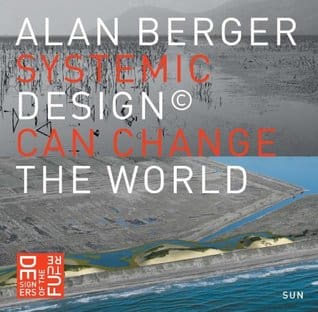Systemic design book writer is a professor in landscape architecture and urban design; he taught various subjects in different academic locations, including MIT and Harvard. He worked on several projects in Europe and USA focused on wetland reconstruction and solving fuel environmental problem in relation to gas emission in suburban America and finding an alternative solution for automobile transport.
The work he conducted is research base work in many fields: landscape architecture, urbanism, infrastructure (landscape), wetland reclamation, and water development. He initiated a new approach named “systemic design” routed to the founders of the ecosystem design and systems theory in Germany by Ludwig von Bertalanffy in the 1940s.
Its apparent from the book title the focus of the book is to introduce the new approach he named “systemic design” to most earth, water, and air engineering and planning projects. From looking into the projects he introduced in his book, the reader can estimate and conclude that these projects are mainly concerned with reclamation of water surfaces, whether it is polluted or abundant for building new settlements.
These projects are subject to applying his approach to a system of layers in resolving environment problems and to study the interaction of several embedded forces. The book is most useful for people specialized in environmental studies, geological studies, ecosystems studies, and landscape and water engineering.
The author introduces the new approach by various projects throughout the book content. The book is hardly 24 pages of descriptive text to the projects under study and research; most of the book is detailed info graphs and project location photos. In many areas of the world building, urban projects and even planning projects take into consideration the various forces of intervention of any building creation, urban project or development plan.
It is a common approach to deal with every design project from different perspectives and to study and analyze the other disciplines involved influence to achieve successful outcomes. The book in its limited pages does not introduce the intended theme the author is willing to provide to the target audience.
Alan Berger dives in the book content without a clear message to the reader about his design, flow, ideas, method , and theory he plan to introduce to his readers the known ones and the unknown ones. I might say that this is the first book I read that comes without an introduction since the first book I read when I was in the secondary school written by George Orwell, “the animal farm”.
The author declares that there is a huge gap in academic study and future prediction about environmental problems and academic studies are slowly developed. Then he goes directly to introduce his firm P-REX and the mutation of research into practice before he starts laying out his firm’s projects.
It is hard to segregate the research base and practice of this book content; most of the projects start as research on environmental problem with direct involvement of government or semi-government body. But, the projects articulated in this book are mostly research and the author did not present in-depth information about the approach he invented. A brief description is the major components of all the projects he participated in.
Most of the book text is the several projects the writer participated in within his research firm; the book does not comprise any themes within chapters. Due to the inexistence of chapter base book theme; the book includes various projects. Every project is presented in a very robust manner, underpinned by analytics graphs and studies, demographic charts and illustrations.
In the absence of book introduction, a reader will pass a strong correlation between every project and another within the book. The approach the author introduced is the base description of every part of them and reflects the book title the author selected for it. The writer gives his book based on the projects he participated in and neglected to build a usual book index; the content is a series of project’s theme. As indicated earlier in this review that this book is project base; readers will not find any references, guidelines, or any best practices the author points to within the content.
The book title gives a strong impression of strong content for people interested in urban design, architecture and planning. How does systemic design can change the world is a very attractive topic and subject for the mentioned fields above. If you are an infrastructure engineer, this book is for you to explore how various infrastructure problems have been solved by the writer and his team.
If you are a planner or environment planner looking to see how many relevant environment and ecosystems problems are studied and researched to find a resolution, then this book is for you. The book does not provide much knowledge about how reclamation can serve architecture and construction of relevant development on the same land or water surface. This book review was written based on my method of writing a book review check details click here.

Be First to Comment